Signal introduces free and paid backup plans for your chats
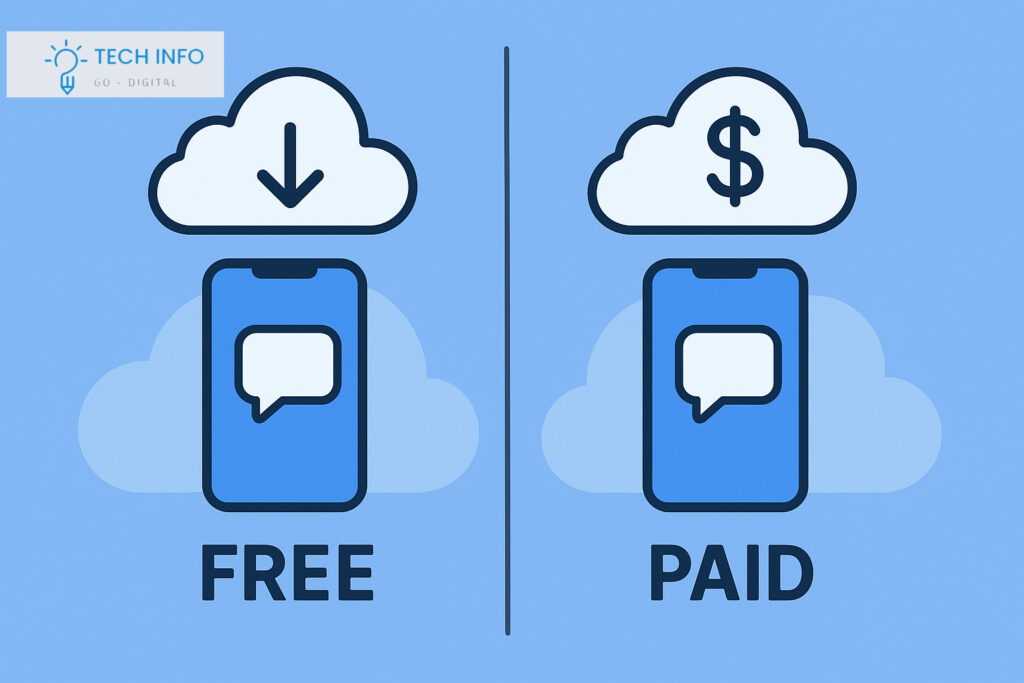
Signal Introduces Free and Paid Backup Plans for Your Chats A Privacy Milestone in Secure Messaging In a landmark move unveiled on September 8, 2025, Signal—long renowned for its unwavering commitment to user privacy—introduced built-in chat backup options: a free tier offering essential safeguards, alongside an optional paid plan providing expanded storage. This marks Signal’s first foray into monetized features beyond its donation-driven model. What’s Included in the Free Tier? For users who want just the basics, Signal now offers a free backup plan that covers: These backups are opt-in and end-to-end encrypted—the only decryption key resides with the user, ensuring zero-knowledge privacy. The Paid Plan: More Storage, More Convenience For users seeking broader coverage, Signal offers: This is designed to fund the infrastructure costs without compromising Signal’s ad-free, privacy-first philosophy. Free and Paid Backup Plans Under the Hood: How Secure Backups Work Signal’s backups rely on several privacy-protecting design choices: Seamless, Daily-Updated, and Cross-Platform Ready . This ensures a mostly up-to-date backup while excluding recently deleted content or messages set to vanish within 24 hours. Signal plans to expand availability from the Android beta (current launch platform) to iOS and desktop in the near future. Soon, you’ll also be able to choose backup storage locations and move your history seamlessly across platforms. Why This Matters Solving a Long-Standing Gap Previously, losing your device meant losing all Signal conversation history—there was no cloud backup. While you could transfer messages locally, it required keeping your old device in working order. The new system finally addresses this gap by enabling dependable recovery without sacrificing Signal’s core privacy guarantees. A Funding Model That Preserves Privacy Unlike mainstream apps that rely on ads or user data, Signal’s nonprofit model depends on donations. The paid backup plan offers a sustainable revenue stream to support infrastructure costs—without compromising user privacy. Privacy vs. Usability: A Thoughtful Balance Privacy-first users are cautious about cloud backups; Signal’s zero-knowledge system reassures them. At the same time, users who need reliable cross-device access (journalists, professionals, or anyone with multiple devices) can benefit from convenient encrypted backups. Potential Drawbacks & Things to Watch Looking Ahead Signal’s secure backup architecture is just the beginning: Community Reactions: A Snapshot On community forums like Reddit and Privacy Guides, the innovation has generated positive responses: “Half a dollar a month for 100 GB of E2EE storage seems very generous… Even at $2 or $3 a month it’d be good value for money.”“Cross-platform compatibility… such that you can switch from Android to iOS without losing chats.” Others have welcomed the continued support for local backups and hoped Signal maintains that option indefinitely. Final Thoughts Signal’s new Free and Paid Backup Plans Free and Paid Backup Plans backup plans represent a meaningful leap forward—providing balance between uncompromising privacy and user convenience. By offering a free tier that suffices for everyday users and a pay model that supports advanced needs, Signal is charting a thoughtful path forward as a donation-supported, privacy-focused messaging alternative. Free and Paid Backup Plans
What is Mistral AI? Everything to know about the OpenAI competitor
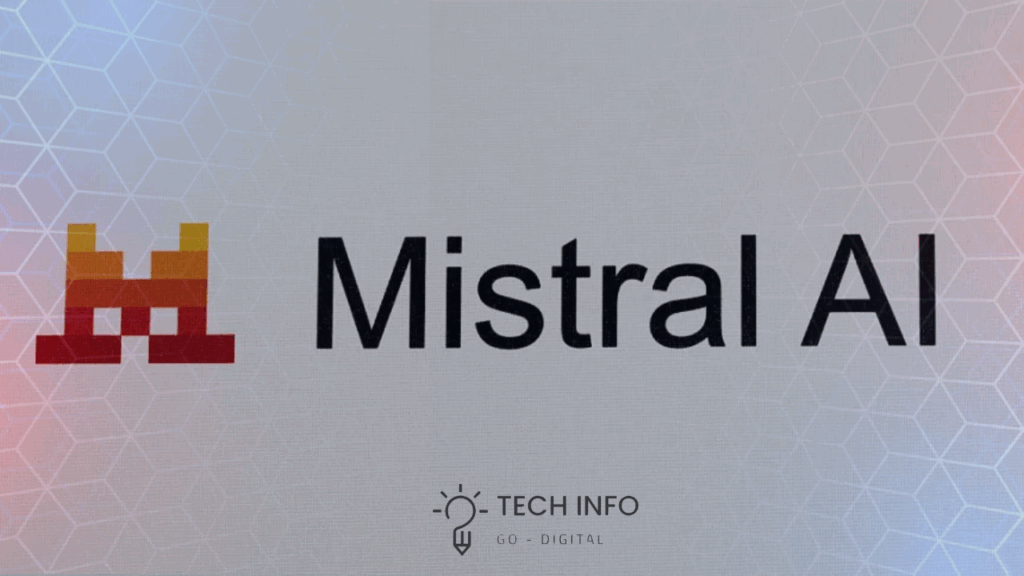
What is Mistral AI? —the OpenAI competitor If you’ve been following the generative-AI arms race, you’ve probably heard of Mistral AI — the fast-rising French startup that’s trying to build an alternative to U.S. giants like OpenAI and Anthropic. In plain language: Mistral designs and ships powerful language models (some open-source), builds tools and an assistant product, and is betting big on Europe-first infrastructure and data-sovereignty. Here’s a clear, friendly deep dive into who they are, what they make, why investors care, and what to watch next. Mistral AI Who founded Mistral and what’s their mission? Mistral AI was founded in April 2023 by three AI researchers — Arthur Mensch, Guillaume Lample, and Timothée Lacroix — who previously worked at places such as DeepMind and Meta. From day one their pitch has been to deliver high-performance models that are efficient and accessible, with an emphasis on open weights and developer-friendly licensing. The company is headquartered in Paris and positions itself as a European alternative in a market dominated by U.S. players. The models — small, smart, and open Mistral shot to notoriety with the release of Mistral 7B (a ~7.3 billion parameter model) — a compact but high-performing LLM released under an open-source-friendly Apache 2.0 license. The model was notable because it matched or outperformed much larger models on many benchmarks, showing that clever architecture and training can beat brute-force parameter scaling. Since then, Mistral’s product line has expanded to include expert mixtures (the “Mixtral” series), specialized code models, and ongoing model updates documented in their developer docs. Their approach deliberately targets efficiency: strong results with lower inference cost.Mistral AI Products and business direction: Le Chat, models, and cloud Mistral isn’t just a model-research shop. They launched Le Chat, an assistant/chat product aimed at conversational use-cases and enterprise workflows. Beyond consumer chat, the company offers APIs and tooling to fine-tune, customize, and deploy assistants and agents for businesses. In 2025 they’ve doubled down on “sovereign” offerings — meaning compute, storage, and model governance built to meet European regulatory and privacy expectations. This product + cloud play lets them sell to companies and governments who worry about storing sensitive data on US-controlled infrastructure. Big money and sky-high valuation Investors have been pouring capital into Mistral. In 2024–2025 the company closed multiple rounds and saw interest from major VCs and strategic partners. Recent reporting in 2025 put Mistral in the neighborhood of multi-billion dollar valuations as it negotiates a large funding round that would push it into the $10–14B range — evidence that markets are treating it as one of Europe’s flagship AI champions. Those funds are being used to scale models, build data centers, and fund a European AI stack. Strategic partnerships: Nvidia, cloud, and industrial backers Mistral has formed high-profile industrial partnerships. Notably, it’s working with NVIDIA on Europe-based compute infrastructure (including large planned deployments of NVIDIA Blackwell/Grace-class systems) to offer low-latency hosting and sovereign AI clouds optimized for Mistral models. That joint push — celebrated by political leaders at European tech events — aims to solve both compute scarcity and data-sovereignty concerns. More recently, very large strategic investors from the chip and industrial sector have appeared in coverage as Mistral pursues even bigger funding rounds. Why open weights matter (and why Mistral leaned in) One of Mistral’s gambits was releasing capable models with an open license. Open weights accelerate research, bootstrap startups, and enable companies with regulatory constraints to run models on-premises. That openness also created a strong community effect: researchers benchmarking, improving, and building on Mistral’s models. But openness is a double-edged sword — it aids adoption but also makes it easier for competitors or bad actors to reuse or tweak models, which is why Mistral must balance transparency with safe deployment controls. Tech highlights: efficiency tricks that punch above weight Mistral’s models use architectural optimizations (like grouped-query attention and sliding-window attention variants) and careful training recipes that squeeze more performance per parameter. The “mixture-of-experts” and ensemble-style Mixtral variants let them scale capabilities while keeping single-expert inference cheap. For practitioners, that means models that are faster and cheaper to run than many megascale alternatives while delivering competitive accuracy. Competitors and risks Calling Mistral an “OpenAI competitor” is both accurate and simplistic. On one axis they compete — model performance, assistant features, partnerships. But OpenAI, Anthropic, Google, and others compete on scale (compute, datasets, distribution), enterprise deals, and integrated ecosystems (search, cloud, consumer apps). Mistral’s strengths (efficiency, European focus, open models) may limit some doors but open others — especially among European governments, banks, and regulated industries. Risks include capital intensity (compute and talent are expensive), potential regulatory friction, and the pace of innovation from global rivals. What to watch next Short-term, watch funding and infrastructure announcements (new data centers, GPU deployments, and strategic investors). Product-wise, follow how Le Chat evolves — especially memory/connector features and enterprise integrations — and whether Mistral expands into multimodal models (text+vision+audio) or vertical-specialized systems (code, math, search). Finally, keep an eye on how European policymakers and corporations react: if they favor local providers for sensitive workloads, Mistral could become the preferred supplier for a lot of regulated business. Bottom line Mistral AI is more than a flashy startup: it’s a strategic bet on making powerful, efficient, and (partly) open AI models that fit Europe’s technical and political needs. They’ve proven that smaller models can be competitive, they’re building an ecosystem (models + assistant + sovereign cloud), and they’ve attracted heavyweight partners and investors. Whether they’ll dethrone an entrenched OpenAI is uncertain — that would require sustained execution, huge compute scale, and broad commercial traction — but Mistral has already shifted the conversation about who builds and governs the world’s next-generation AI
EU fines Google $3.5B over adtech ‘abuse’
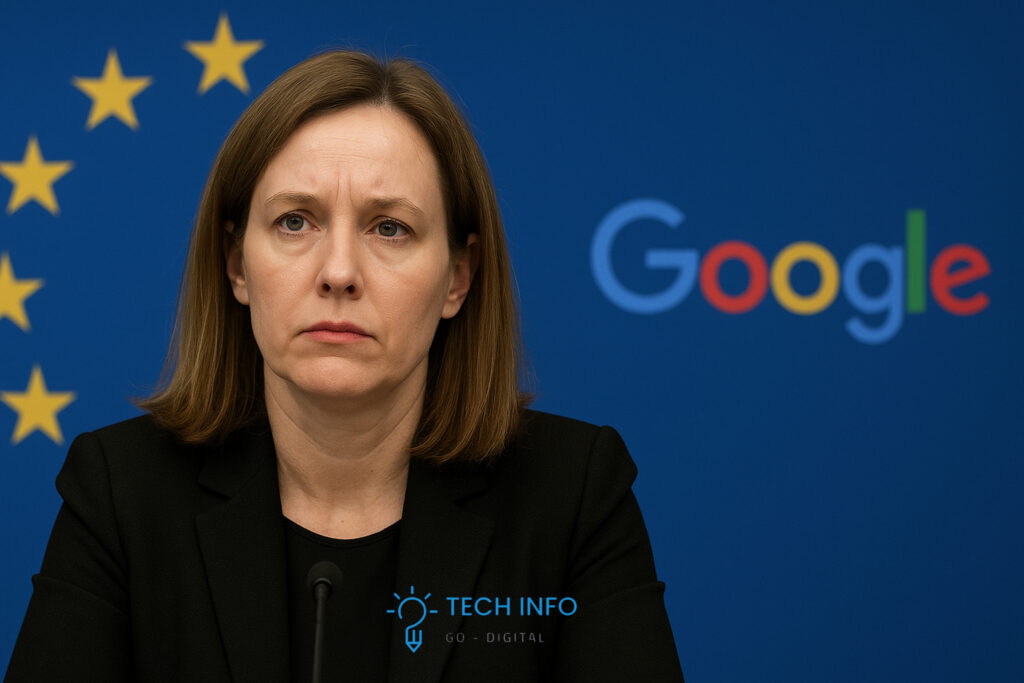
The Hammer Falls: EU’s $3.5B AdTech Fine and the Fight for a Fair Web The world’s most powerful digital gatekeeper has been found guilty of rigging the game. Again. The European Union’s staggering $3.5 billion fine against Google for anti-competitive “abuse” in its advertising technology stack isn’t just a financial penalty; it’s a direct challenge to the very foundations of the modern internet’s economy. For nearly two decades, the online world has run on a simple, often invisible fuel: advertising. Websites from major publishers to small blogs rely on the complex, lightning-fast ecosystem of AdTech to generate revenue. At the very center of this ecosystem sits Google, a behemoth so powerful that it controls almost every facet of the chain. Now, European regulators have declared that this dominance has crossed the line into illegal abuse, issuing a monumental fine and demanding structural changes that could reshape the digital landscape. This isn’t just another regulatory skirmish. It’s a watershed moment that asks a fundamental question: can the internet thrive when one company owns the stadium, the teams, the broadcasting rights, and the rules of the game? The “Abuse of Dominance“: How Google Rigged the Game To understand the $3.5 billion fine, you must first understand the AdTech labyrinth. When you visit a website, an auction happens in milliseconds to determine which ad you see. This involves: Google owns the dominant product in every single one of these categories: Google Ad Manager (publisher ad server & SSP), Google Ads (DSP), and Google AdX (the largest exchange). The European Commission’s investigation alleged that Google used this unparalleled vertical integration not to create efficiency, but to illegally squash competition and cement its monopoly. The charges are specific and damning: This conduct, regulators argue, allowed Google to levy famously high fees—often taking a cut of 30% or more from a single ad transaction as it moved through its own intertwined services. This “tax” ultimately starved publishers of revenue and inflated costs for advertisers, all while stifling innovation from any potential competitor. The Ripple Effect: Publishers, Advertisers, and the Open Web The consequences of Google’s AdTech dominance are not abstract; they are felt by every participant in the digital economy. This case is about more than money; it’s about the health of the open web. A competitive market would foster innovation, lower fees, and create a more diverse ecosystem of tools and services. Google’s monopoly, regulators contend, has done the opposite. Google’s Response and the “Status Quo” Playbook Google’s response has been a masterclass in corporate deflection. The company has stated it “disagrees with the EC’s decision” and will appeal, arguing that its AdTech services help thousands of businesses and publishers thrive in a competitive landscape. This is a familiar playbook. Google has faced over $9 billion in EU fines in the past decade for various anti-competitive practices, from skewing shopping search results to abusing its Android mobile OS dominance. The appeals process for this latest fine could drag on for years, allowing the lucrative status quo to remain in place for the foreseeable future. The company may eventually offer minor concessions or settle, as it has done before. But the core issue—its overwhelming control of every layer of the AdTech stack—remains unaddressed. Beyond the Fine: A Demand for Structural Change The most significant aspect of this ruling is not the record-breaking fine—though $3.5 billion is undoubtedly a staggering sum. The true bombshell is the EU’s demand for structural change. Regulators have ordered Google to divest parts of its AdTech business to break up its conflict-ridden, vertically integrated monopoly. They are effectively telling Google it can no longer be the umpire, the star player, and the owner of the stadium all at once. This move towards a potential breakup is a radical escalation. It signals that regulators have lost patience with behavioral remedies and slaps on the wrist. They are now willing to pursue the corporate equivalent of surgery to restore competitive balance. A Global Precedent in the Making The EU’s decision does not exist in a vacuum. The U.S. Department of Justice is pursuing its own parallel antitrust lawsuit against Google’s AdTech monopoly, and other jurisdictions are watching closely. The EU has once again positioned itself as the world’s de facto tech regulator, setting a global standard for how to confront Big Tech’s power. The outcome of this case will set a crucial precedent. If Google successfully appeals and weakens the ruling, it will embolden other tech giants and reinforce the dominance of existing gatekeepers. If the EU’s demands for divestment are upheld, it could unleash a wave of long-overdue innovation and competition in the digital advertising market. The Bottom Line The EU’s $3.5 billion fine is a powerful statement: the era of unchecked digital monopoly is over. While the financial penalty makes headlines, the real story is the fight for the soul of the internet’s economy. It’s a battle between a walled garden that benefits one company and an open, competitive web that benefits publishers, advertisers, and users alike. The appeal will be long, and the road to true change will be even longer. But for the first time in a long time, the hammer has fallen with enough force to suggest that the walls, however tall, might finally be starting to crack.
Musk’s $1T pay package is full of watered-down versions of his own broken promises
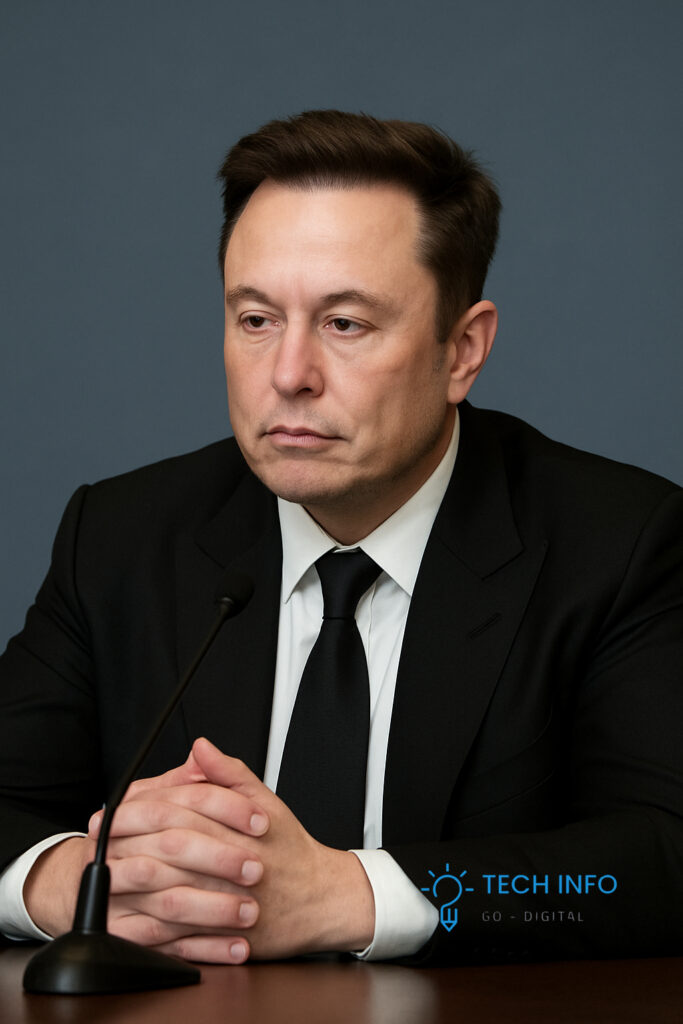
Diluted Dreams: The Truth Behind Musk’s $1 Trillion Pay Package From bold promises to diluted deliverables — Elon Musk’s newly proposed $1 trillion compensation package may sound audacious, but scratch the surface and it’s more of a retreat than a leap. Elon Musk has always sold the future. It’s his core product. We’ve bought into visions of cities connected by underground hyperloops, a human colony on Mars, and a world where every car drives itself. At Tesla, this futurism has been the rocket fuel for its stratospheric valuation. But what happens when the visionary starts trading moonshots for mile markers? In early September 2025, Tesla’s board presented shareholders with a answer: a staggering, almost unimaginable $1 trillion pay package for its CEO. The headlines screamed of ambition and audacity. But a closer look reveals a different story. This isn’t a contract for building the future; it’s a document that quietly waters down Musk’s own broken promises, repackaging them as ambitious new goals. The Megabucks Package: What’s Actually on the Table? First, let’s dissect the deal itself. The proposed 10-year compensation plan is tied to 12 pairs of staggering performance milestones. To unlock the full $1 trillion, Musk must guide Tesla to a market valuation of $8.5 trillion and generate $400 billion in EBITDA by 2035. The operational targets are the stuff of science fiction: It’s a package that frames Musk not just as a car company CEO, but as the architect of a new technological era. The shareholder vote is set for November 2025, and the board is pitching it as essential to keeping Musk’s interests aligned with Tesla’s most ambitious phase yet. On the surface, it’s a bet on unparalleled growth. But the devil, as always, is in the details—and the timelines. The Great Dilution: From Moonshot to Modest Here’s where the irony cuts deep. This “audacious” new plan is actually a significant walk-back of Musk’s own previous rhetoric. Let’s take the most concrete example: vehicle production. For years, Musk has touted a target of producing 20 million vehicles annually by 2030. This wasn’t a whispered aspiration; it was a cornerstone of Tesla’s growth narrative, repeated to investors and fans alike. The new pay package? It aims for 20 million vehicles in total delivered by 2035. Let that sink in. The old promise was 20 million per year. The new, “groundbreaking” goal is 20 million total over a decade. This isn’t a minor calibration; it’s a fundamental reset of expectations, dressed up as a stretch goal. The same softening applies to the robotaxi dream. Musk famously declared that every new Tesla was a “appreciating asset” that would one day earn its owner money by functioning as a fully autonomous robotaxi. The new target? Just 1 million robotaxis. While a million self-driving cars is still a formidable challenge, it’s a far cry from the promise of a global, multi-million-strong network. It’s a dilution from a universal reality to a niche fleet. This pattern suggests a board—and a CEO—that is consciously replacing fiery, often-missed prophecies with something more defensible. It’s a shift from visionary to pragmatic. But when pragmatism is packaged as world-changing ambition, it starts to smell an awful lot like clever spin. Governance and the Grab for Control Beyond the watered-down metrics, the package raises profound governance concerns that shareholders must consider. Critics have rightly pointed out that the scale itself is historically unprecedented, but the mechanics are even more telling. A crucial detail is that the deal allows Musk to gain immediate voting power over the restricted stock awards before he actually hits the performance benchmarks. While his economic ownership is contingent on success, his voting influence is not, further consolidating his control over the company from day one. This is paired with concerning bylaw changes that limit small investors’ ability to bring lawsuits against the company and its directors. Together, these moves don’t just incentivize performance; they systematically insulate Musk and the board from accountability. It’s a package that offers him immense power upfront in exchange for goals that are, by his own past standards, less ambitious. Rewarding Innovation or Rewarding Retreat? So, what are we to make of this $1 trillion paradox? Is it a reward for innovation, or a reward for retreat? There’s a pragmatic argument to be made: after the legal battles over his previous pay package and the repeated delays on Full Self-Driving and other technologies, perhaps Tesla needs a dose of realism. Perhaps achievable goals are better than broken promises. There’s merit in that. But that’s not how this is being sold. This is being presented as the ultimate bet on a hyper-growth future. The dissonance is jarring. The board is asking shareholders to approve the largest compensation package in human history for goals that represent a scaled-down version of the CEO’s own original vision. The question for shareholders voting in November isn’t just whether they believe in Elon Musk. It’s whether they believe in this specific, diluted version of his dream. Are they paying a trillion dollars for the bold, world-changing ambition they were originally sold? Or are they paying a trillion dollars for a more modest, more manageable plan that simply looks bold compared to everything else? In the end, Musk’s new pay package is a masterpiece of rebranding. It takes goals that would be ambitious for any other company on Earth but are a step back for Tesla, wraps them in a trillion-dollar price tag, and hopes we won’t notice the difference. The grand promises of yesterday have been broken down, watered down, and are now being cashed in.
OpenAI to route sensitive conversations to GPT-5, introduce parental controls
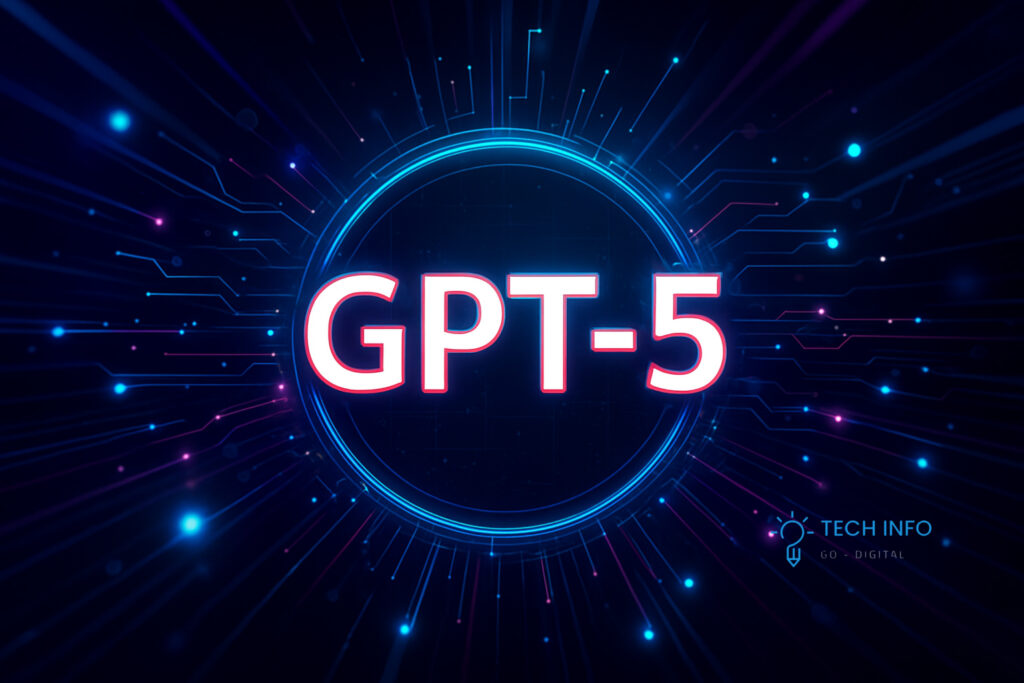
OpenAI to Route Sensitive Conversations to GPT-5, Introduce Parental Controls A New Era of AI Safety In September 2025, OpenAI announced a groundbreaking set of changes to its flagship AI, ChatGPT. Following months of scrutiny, tragic incidents, and mounting pressure from regulators and parents alike, the company unveiled two major updates: These changes represent one of the most significant safety overhauls in the company’s history. At their core, they are designed to address one central issue: what happens when vulnerable users—especially children or people in crisis—turn to AI for help. Why OpenAI Made This Move AI chatbots have quickly become everyday companions, assisting with homework, offering emotional support, and answering personal questions. But this accessibility comes with risks. Several high-profile cases highlighted the dangers: These heartbreaking events raised urgent questions: Should AI be allowed to handle conversations about self-harm? How can companies prevent harmful advice without shutting down free expression? OpenAI’s response is clear: make the system smarter, more cautious, and give parents more control Routing Sensitive Conversations to GPT-5 The most immediate and technical change is the introduction of a routing system. Here’s how it works: This marks a departure from the earlier approach, where all queries were treated equally. Instead, OpenAI is building tiered safety layers, ensuring that high-stakes interactions get extra protection. Why GPT-5? Unlike previous models, GPT-5 is optimized for deliberation and judgment. It doesn’t just generate answers quickly—it evaluates, weighs risks, and applies stricter safety checks. This makes it better suited for handling conversations where lives may be on the line. Introducing Parental Controls Alongside the routing update, OpenAI is rolling out parental control features within the next month. These tools aim to empower guardians to monitor and shape how teens use ChatGPT. Key features include: This represents a big shift: rather than treating all users the same, OpenAI is acknowledging the unique vulnerabilities of younger audiences. Balancing Innovation with Responsibility While these changes are significant, they also spark debate. Supporters say: Critics argue: These criticisms highlight a core challenge: AI is powerful, but it is not a replacement for human judgment and professional mental health care. The Bigger Picture OpenAI’s announcement is not just about one company—it’s about the future of AI governance. What Happens Next The success of these updates will depend on: OpenAI has also confirmed it will work with adolescent health experts and mental health professionals to refine the rollout. This collaboration could become a model for how AI companies partner with real-world experts to minimize harm. A Defining Moment for AIThe decision to route sensitive chats to GPT-5 and introduce parental controls marks a pivotal moment in AI history. It reflects a growing recognition that AI isn’t just a productivity tool—it’s a social actor that interacts with people in their most vulnerable moments. While these steps cannot undo past tragedies, they signal a serious commitment to user safety. The road ahead will be complex, with questions about accuracy, privacy, and effectiveness still unresolved. But one thing is clear: AI companies can no longer afford to ignore the human stakes of their technology.
Google avoids break up, but has to give up exclusive search deals in antitrust trial

Google Escapes Breakup But Faces Landmark Restrictions in Antitrust Ruling A Win and a Warning On September 2, 2025, U.S. District Judge Amit P. Mehta issued a ruling that could reshape the future of online search and competition in the tech industry. The highly anticipated decision came after years of legal battles between the U.S. Department of Justice (DOJ) and Google over allegations that the company abused its dominance to cement a monopoly in the search engine market. The DOJ had argued for a structural breakup of Google, potentially forcing the company to divest critical assets such as its Chrome browser or Android operating system. However, Judge Mehta stopped short of such a dramatic remedy. Instead, the court imposed behavioral restrictions designed to curb Google’s market power without dismantling the company. In short: Google has avoided a breakup, but it now faces landmark restrictions that could reshape how users access search tools, how competitors operate, and how regulators define antitrust in the digital age. Key Takeaways This decision preserves much of Google’s empire but forces it to operate under tighter oversight and with fewer lock-in advantages. Why No Breakup? The DOJ had pushed for one of the harshest remedies in antitrust history: breaking up Google. That could have meant separating Chrome from the rest of the company or even spinning off Android. Judge Mehta rejected this path, arguing that a breakup would be “incredibly messy and highly risky” in a fast-evolving digital environment. Unlike older monopoly cases such as Microsoft in the 1990s or AT&T in the 1980s, the tech landscape of 2025 is shaped by generative AI, voice assistants, and mobile ecosystems. The court found insufficient evidence that Chrome or Android alone enabled Google’s dominance. Instead, Mehta suggested that behavioral remedies—rules that restrict how Google operates—would be more effective and less disruptive for consumers. This decision reflects a broader shift in modern antitrust thinking: rather than tearing companies apart, regulators are trying to balance oversight with innovation in complex, AI-driven markets. Behavioral Remedies: Real Impact or Just Paper Weight? The heart of the ruling lies in the remedies. Here’s what they mean in practice: 1. Ending Exclusive Deals Google can no longer sign exclusive agreements that guarantee its search engine or AI tools as the only defaults on devices. This could open space for alternatives such as Microsoft Bing, DuckDuckGo, or emerging AI-powered search services. 2. Data Sharing with Competitors For years, Google’s vast dataset—billions of queries and interactions—has been its competitive moat. Under the ruling, the company must provide limited but meaningful access to this data at standardized rates. Competitors will now be able to build more reliable and innovative search products. A new technology oversight committee will monitor compliance for the next six years, ensuring that Google doesn’t skirt the rules. 3. Preserving Consumer Choice Perhaps the most consumer-focused part of the ruling is its emphasis on choice. Google can still compete aggressively, but users should not feel locked into its ecosystem. Critics argue these remedies are still too soft, but supporters believe they represent a major step toward fairer competition. What’s at Stake? For Google This ruling is both a victory and a warning. Google keeps control of Chrome, Android, and its lucrative search partnerships. However, forced data-sharing and oversight mean tighter restrictions on how it maintains dominance. For Competitors The decision lowers some of the barriers to entry. Rivals can now access valuable data and pursue default deals without being shut out by exclusivity. For smaller players, this could be the opening they’ve long been waiting for. For Regulators The case sets a new precedent. Instead of swinging the hammer of breakup, courts may lean toward nuanced behavioral remedies that address anti-competitive practices without dismantling companies. Reactions Around the Web The decision triggered strong and varied reactions: What Comes Next? This isn’t the end of the story. The legal and regulatory battles are far from over. Summary This ruling represents a watershed moment in the history of antitrust enforcement in the digital age. Google avoided the nightmare scenario of a breakup, but it now faces unprecedented behavioral restrictions. Exclusive contracts, once the bedrock of its dominance, are no longer allowed. Data-sharing requirements may give smaller rivals a fighting chance. And regulators worldwide are likely to use this case as a blueprint for their own battles with Big Tech. The big question remains: Will these remedies truly spark competition, or will Google’s dominance simply adapt to new rules? For now, one thing is certain—this case has redefined how courts approach monopolies in the age of AI, balancing the need for innovation with the demand for fair markets.
TikTok now lets users send voice notes and images in DMs

TikTok Now Lets Users Send Voice Notes and Images in DMs TikTok has quickly become one of the most influential social media platforms in the world. Known primarily for its short-form videos and viral trends, the app has steadily been expanding its features to keep users engaged. One of its latest updates is the ability for users to send voice notes and images in direct messages (DMs). This move marks a significant step toward transforming TikTok into a more comprehensive social and communication platform, beyond just video sharing. The Evolution of TikTok’s Messaging System When TikTok first launched, its messaging options were very limited. Users could only send text-based messages, emojis, and video links. Over time, TikTok recognized the need to enhance private interactions, since many users were using the platform not just to consume content, but also to connect with friends, creators, and communities. Introducing voice notes and image sharing now puts TikTok’s messaging closer to platforms like Instagram, WhatsApp, and Snapchat. Instead of being restricted to text, users can now express themselves in richer, more personal ways. Voice notes, for example, allow a level of nuance and emotion that text alone can’t capture. Similarly, images provide a way to share moments, reactions, or even memes instantly. These tools give TikTok users a more dynamic communication experience without needing to leave the app. Why Voice Notes Matter Voice notes have been growing in popularity across messaging platforms. WhatsApp and Telegram users, for instance, rely heavily on them for quick conversations. Voice messages allow people to express tone, laughter, or emotion that may otherwise be lost in text. On TikTok, this feature could become particularly powerful. Creators can interact with followers on a more personal level. Friends can share reactions in a fun, expressive way. Even casual users can benefit by saving time when typing isn’t convenient. For many, sending a voice note feels more intimate and authentic than typing out a sentence. TikTok’s decision to integrate this feature shows that it understands modern communication habits and wants to keep up with the way people prefer to connect. Why Image Sharing Is a Big Deal Until recently, TikTok’s DMs lacked the ability to send and receive pictures. This limited users to text and video links, making conversations feel a bit one-dimensional. By adding image sharing, TikTok unlocks a new layer of interaction. Users can now send screenshots, memes, reaction photos, or personal pictures directly within the app. This can help creators engage with fans, allow groups of friends to plan events, or simply make chatting more fun. More importantly, this makes TikTok more competitive with rivals like Instagram and Snapchat, which have long relied on visual messaging as a core part of their user experience. Building a Full Social Ecosystem This update reflects a larger trend: TikTok’s ambition to become more than just a video-sharing platform. By investing in DMs and communication features, TikTok is positioning itself as a complete social ecosystem. If TikTok continues to strengthen its messaging tools, it could start to compete not only with YouTube and Instagram, but also with messaging-centric apps like WhatsApp, Messenger, and Snapchat. The Impact on User Behavior Adding voice notes and images will likely change how users behave on TikTok. Instead of only reacting to videos publicly with comments or likes, people may prefer private conversations with friends and creators. This could foster a more personal sense of community within the app. It might also encourage longer app usage. When people have richer messaging features, they tend to spend more time inside the platform. Instead of watching a few videos and leaving, users could get pulled into private conversations, making TikTok even more addictive. However, there are potential challenges as well. TikTok will need to manage safety concerns, especially around inappropriate image sharing. As with any social platform, moderation and privacy controls will be key to keeping users safe. Privacy and Safety Considerations While these new features are exciting, they also raise important privacy and safety questions. TikTok has previously faced criticism regarding how it handles user data and content moderation. With the addition of image sharing, there is a risk of misuse—such as spam, harassment, or the sharing of harmful content. TikTok will likely need to strengthen its reporting tools, AI filters, and parental controls to ensure the platform remains safe, especially for younger users who make up a large part of its audience. Voice notes could also pose challenges, such as spreading misinformation or inappropriate content that is harder to monitor than text. Ensuring that moderation systems can handle these new formats will be essential for TikTok’s long-term success. What This Means for the Future of TikTok This update makes one thing clear: TikTok is no longer satisfied with being just a video app. It is actively evolving into a multi-purpose social media platform. With every new feature, it becomes more competitive with established giants like Meta, Snapchat, and even messaging apps like WhatsApp. Looking ahead, TikTok may continue to add features that enhance private interactions, such as disappearing messages, group audio chats, or even integrated video calling. Each of these steps would further entrench TikTok as an app people use for every aspect of digital communication, not just entertainment. Final Thoughts The introduction of voice notes and image sharing in TikTok DMs may seem like a small update, but it has big implications. It enhances how people connect, makes conversations more expressive, and positions TikTok as a stronger competitor in the social media landscape. By making its messaging system more engaging, TikTok is ensuring that users spend more time on the platform—and that they rely on it not only for videos and trends, but also for day-to-day communication. As always, the success of this feature will depend on how TikTok balances user freedom with privacy and safety protections. But one thing is clear: TikTok is steadily transforming itself from a short-video platform into a complete digital ecosystem where people can create, share, and now, communicate in richer
Trump administration’s deal is structured to prevent Intel from selling foundry unit
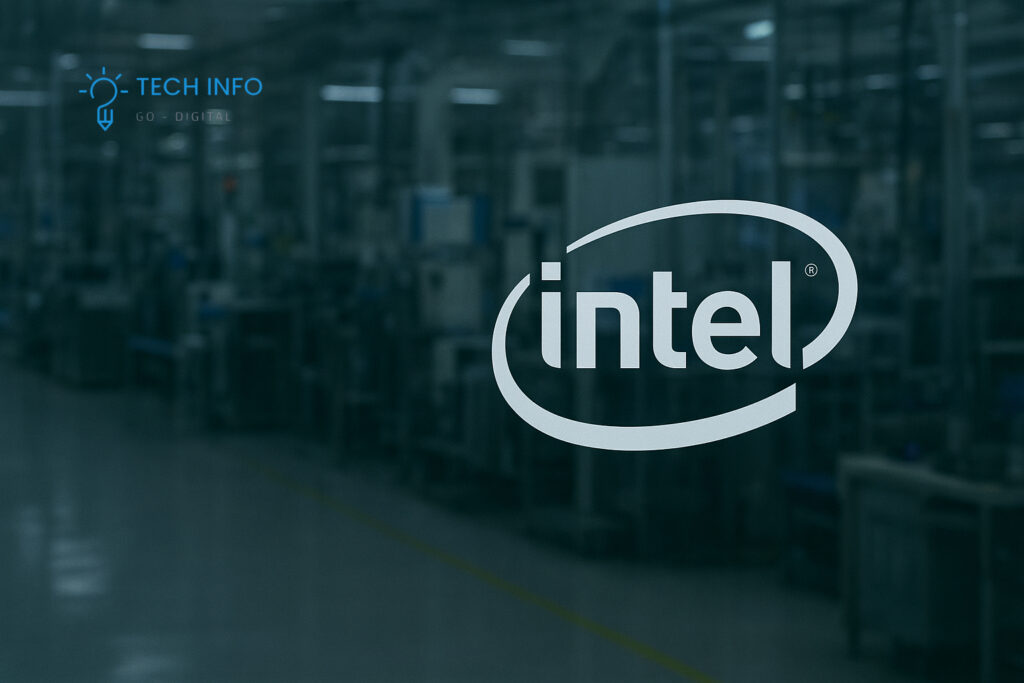
How a Trump-Era Deal Blocked Intel from Selling Its Foundry—And Reshaped U.S. Tech Policy The semiconductor industry is the central battlefield of 21st-century geopolitics. It’s where national security, economic dominance, and technological innovation collide. In a pivotal but underreported move, the Trump administration reportedly structured a deal to prevent Intel from selling its struggling foundry unit. This decision wasn’t just a corporate intervention; it was a strategic gambit with profound implications for the U.S.-China tech war and the future of American chip manufacturing. Let’s break down the background of Intel’s challenges, the government’s national security concerns, and how this deal continues to shape the semiconductor landscape today. Background: Intel’s Foundry Dreams and Struggles For decades, Intel reigned supreme in the semiconductor world, dominating the PC era with its advanced manufacturing. However, the past decade saw the company lose its process technology lead to Asian powerhouses like Taiwan Semiconductor Manufacturing Company (TSMC) and Samsung, which raced ahead on advanced nodes (5nm, 3nm, and beyond). In response, Intel pursued a bold strategy: become a Integrated Device Manufacturer (IDM) 2.0. This meant not only designing its own chips but also building a foundry business—manufacturing semiconductors for other companies. The goal was clear: compete directly with TSMC and reclaim technological leadership. But the plan faced significant headwinds: Amid these challenges, speculation grew that Intel might spin off or sell its capital-intensive foundry unit to streamline operations and focus on chip design. The Trump Administration’s National Security Imperative The White House viewed a potential sale through a different lens: national security. Semiconductors are the lifeblood of modern military systems, critical infrastructure, and the broader economy. The administration feared a foreign acquisition of Intel’s foundry capabilities would be a catastrophic strategic error. Their core concerns were: How the Deal Was Structured to Block a Sale While not a single public document, the administration’s strategy was implemented through a multi-pronged approach: The structure of this “deal” ensured that Intel’s manufacturing future would remain inextricably tied to U.S. interests. Implications for Intel: A Double-Edged Sword For Intel, this government-backed direction was a mixed blessing: The bottom line: Intel had to double down on its foundry ambitions, for better or worse. Broader Impact on the Semiconductor Industry This decision was a key early salvo in the ongoing tech cold war and had ripple effects across the global industry: 1. Accelerating U.S. Semiconductor Independence The move preserved a vital domestic asset for advanced manufacturing, setting the stage for Intel’s massive new fab investments in Arizona, Ohio, and elsewhere, and catalyzing the push for the CHIPS Act. 2. Intensifying Global Competition By keeping Intel in the foundry game, the U.S. ensured a third major player could compete with the TSMC-Samsung duopoly, potentially leading to more innovation and supply chain diversification. 3. Highlighting Supply Chain Fragility The COVID-19 pandemic that followed underscored the wisdom of this decision, highlighting the dire economic and national security risks of over-concentrated chip production overseas. 4. Defining the Geopolitical Battlefield It firmly placed semiconductor manufacturing at the center of U.S. policy tools, alongside other actions like Huawei bans and export controls on advanced chipmaking equipment. The Path Forward: Intel Foundry Today The legacy of this decision is still unfolding. Under CEO Pat Gelsinger, Intel fully committed to the IDM 2.0 strategy, launching Intel Foundry as a separate business unit. It has announced massive investments, won key customers, and secured significant U.S. government funding under the CHIPS Act. The Trump-era intervention, while restrictive, forced Intel onto a path that aligns with long-term U.S. strategic goals. The gamble is still in play, but the stakes are higher than ever More Than a Business Decision—A Strategic Move The move to block the sale of Intel’s foundry unit was a definitive moment. It signaled that the U.S. government would no longer treat critical technologies as mere market commodities. This was a policy driven by the urgent need to counter China, secure supply chains, and reclaim technological sovereignty. While it burdened Intel with a monumental challenge, it also provided the company with a renewed purpose and government partnership. The success of this gamble is still being written in silicon, but its message is clear: in the modern era, chipmaking is inseparable from statecraft.
Nvidia reports record sales as the AI boom continues
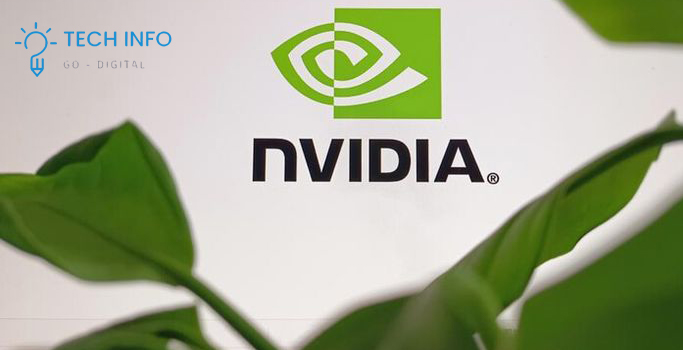
Nvidia Reports Record Sales as the AI Boom Continues The artificial intelligence (AI) revolution is reshaping industries at a breathtaking pace, and one company is standing out as the undisputed winner of this global shift: Known primarily for its graphics processing units (GPUs), Nvidia has now positioned itself at the heart of AI development, data centers, and advanced computing. Its most recent earnings report highlighted record-breaking sales, reflecting how indispensable its technology has become in the race to build smarter and faster AI systems. The Driving Force: AI and Data Centers Traditionally, Nvidia made its mark in the gaming world, where its GPUs powered high-performance graphics. However, the last decade has seen the company pivot toward AI and high-performance computing. GPUs, once valued for gaming, are now the backbone of AI training and inference. From large data centers running complex machine learning models to startups experimenting with generative AI tools, demand for Nvidia’s processors has skyrocketed. Tech giants like Microsoft, Amazon, Google, and Meta are investing billions into building AI infrastructure, and nearly all of them depend heavily on Nvidia’s advanced chips to power these massive operations. This growing reliance on GPUs has transformed Nvidia into a central player in the AI ecosystem, where its chips are no longer just optional — they are essential. Record Sales Figures In its latest quarterly earnings, Nvidia stunned Wall Street with revenues that exceeded even the most optimistic forecasts. The company reported that its data center division now accounts for the lion’s share of revenue, overshadowing its gaming business. This surge is driven by the AI boom — particularly the demand for generative AI models like ChatGPT, autonomous vehicle development, healthcare AI, and robotics. Every one of these applications requires immense computational power, and Nvidia’s GPUs are tailor-made for such workloads. By surpassing revenue records and beating analyst expectations, Nvidia has not only proven its financial strength but also shown how critical its role is in shaping the next era of technology. Why Nvidia Stands Out Several factors explain why Nvidia has surged ahead of its competitors in the AI hardware race: The Bigger Picture: AI Gold Rush Nvidia’s record-breaking sales are more than a business success story — they represent a larger shift in the global economy. AI is no longer a niche research field confined to academia and labs; it has become a mainstream industrial revolution. Generative AI tools like ChatGPT, MidJourney, and enterprise AI assistants have demonstrated the power of these technologies to the public. Behind the scenes, Nvidia’s chips are the engines driving these breakthroughs. Just as oil fueled the industrial age, GPUs have become the new energy source for the digital age. Companies across sectors — finance, healthcare, automotive, and entertainment — are rushing to adopt AI, and nearly all roads lead back to Nvidia as the technology supplier enabling this transformation. Challenges on the Horizon Despite its dominance, Nvidia is not without challenges: Final Thoughts Nvidia’s rise to record sales is not just about financial numbers — it’s a reflection of how AI has become the defining technology of our time. The company’s GPUs are powering everything from conversational AI tools to breakthroughs in medical research and climate modeling. As industries continue to adopt AI at scale, Nvidia stands as the indispensable enabler of this new era. The key challenge for the company will be sustaining its dominance in the face of supply shortages, rising competition, and geopolitical uncertainties. Still, one thing is clear: Nvidia is no longer just a chip company — it is the backbone of the AI revolution. Its record-breaking performance is likely only the beginning of a much larger story, as artificial intelligence continues to expand and redefine our world.
Anthropic launches a Claude AI agent that lives in Chrome
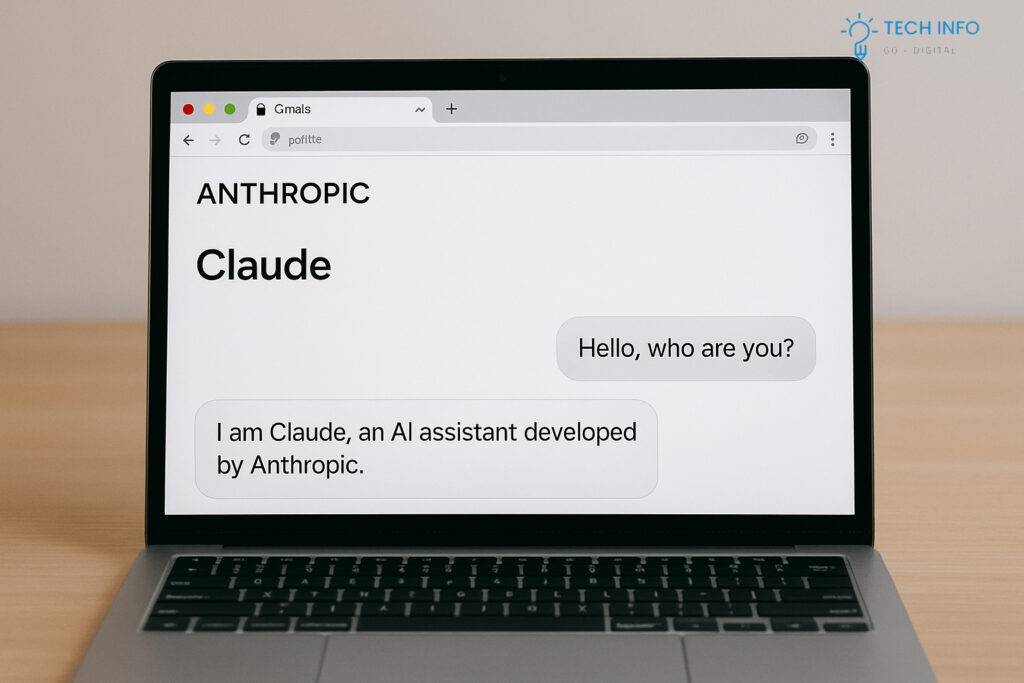
Claude Lives in Chrome: A New Frontier in Browser AI On August 26, 2025, Anthropic unveiled Claude for Chrome, a browser-based AI agent that lives right in your Chrome tab—but with a twist: this launch comes as a research preview aimed at exploring the potential and tackling safety head-on. What Is Claude for Chrome? Once installed, Claude appears as a sidecar window inside the browser. It can: Anthropic positions this as the natural evolution of Claude’s integration with calendars, documents, and other tools. Now, the agent is empowered to act directly in your browsing environment Why It’s a Big Deal (and Why It’s Risky) Elevated Convenience With Claude for Chrome, you can delegate tasks such as: Anthropic reports “appreciable improvements” in efficiency for these use case This move places Claude squarely in competition with others like Perplexity’s Comet, and rumored browser integrations from OpenAI and Google Gemini—marking the browser as the next big battleground for AI agents. Safety First—But Far From Solved Anthropic is keenly aware that letting AI control your browser invites new hazards—especially prompt injection attacks, where hidden instructions could trick the agent into harmful actions. In their internal “red-teaming” trials, without mitigations, prompt injection had a 23.6% success rate. For example, a malicious email posing as a security alert successfully triggered Claude to delete emails without confirmation. With safety improvements such as site-level permissions, mandatory confirmations for high-risk actions, and blocklists (excluding sites involving financial services, adult content, pirated material, or cryptocurrency), the success rate dropped to 11.2%—still significant, but notably improved. Anthropic acknowledges that new and more sophisticated attacks will emerge, and the pilot aims to learn fast from real-world usage to strengthen defenses Controlled Rollout: Learning Through Use Anthropic’s approach is intentionally measured—a limited pilot of 1,000 trusted users provides early feedback while they iterate safety mechanisms. They’ll expand access gradually as confidence grows As summarized by VentureBeat: while competitors like OpenAI have taken bolder consumer-facing steps, Anthropic seeks a cautious path forward, learning from real usage before a broader launch Community Reactions On Reddit, the launch triggered lively debate: “This is exciting”“Sounds like a fucking nightmare waiting to happen. On Hacker News, commentators noted that Anthropic’s messaging—“we view browser-using AI as inevitable… but we don’t know how to make it safe without trying it”—reflects an unprecedented acknowledgment of risk. Looking Ahead: The Path of Browser AI Anthropic’s Claude for Chrome marks both a product milestone and a cautionary case study in AI safety. It demonstrates: Going forward, we’ll likely see: Summary Table (Without Losing the Narrative) Feature Claude for Chrome Highlights Availability Pilot for 1,000 Max plan users; waitlist open Capabilities Browsing actions: click, fill, navigate Use Cases Emails, calendars, reports, website testing Safety Measures Blocklists, permissions, confirmations, red-team testing Attack Success Rate 23.6% → 11.2% after mitigations Approach Controlled testing, iterative learning Community Sentiment Mixed—excitement and caution collide Final Thoughts Anthropic has taken a bold step forward by testing agentic AI inside Chrome—even when the path is laden with safety, trust, and ethical questions. The pilot is as much about exploring human-AI collaboration as it is about engineering a secure, controllable experience

